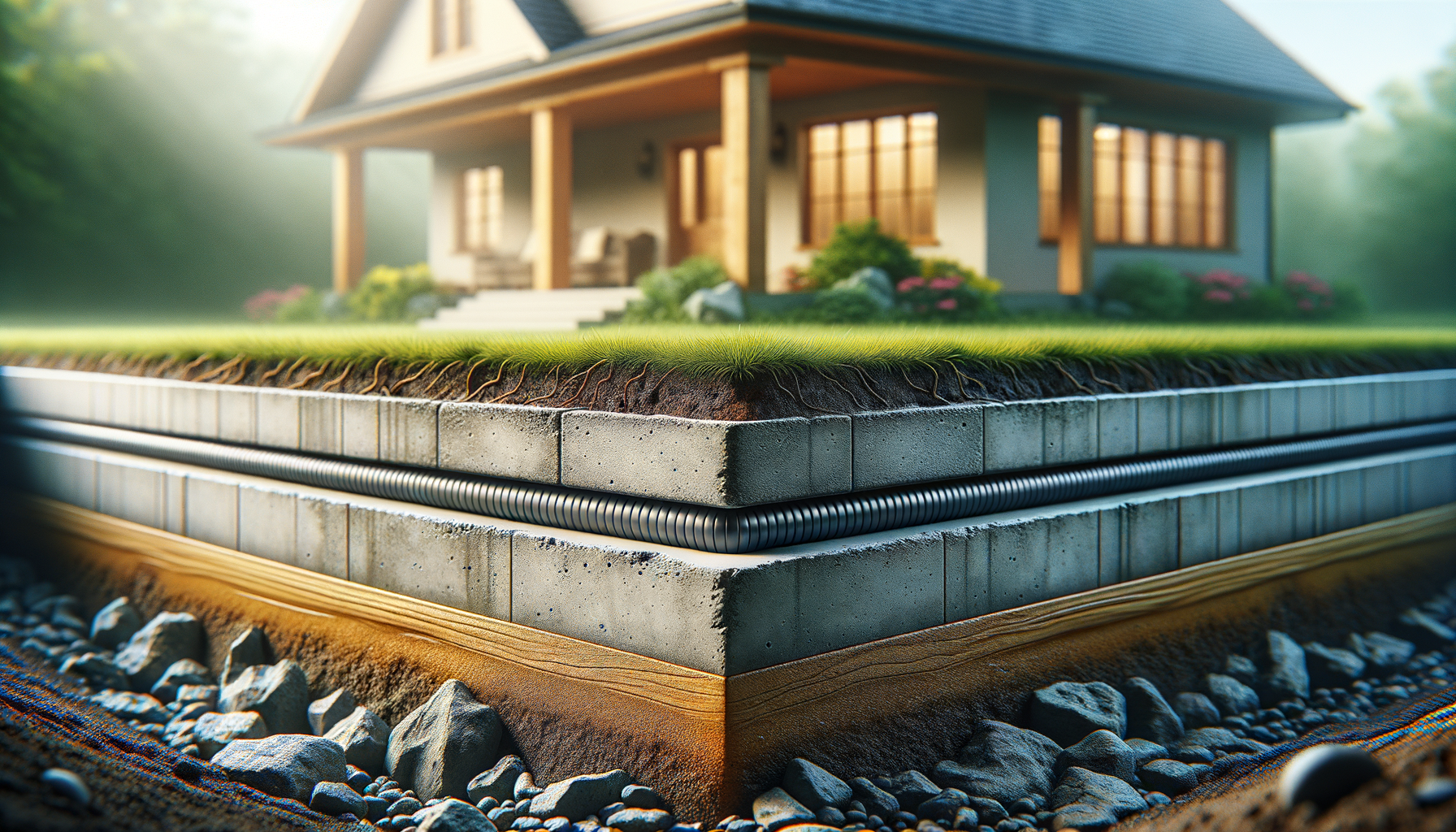Understanding the Importance of a Strong Foundation
Foundation Basics
What is a foundation?
The foundation is the base that supports your home. It helps keep your house standing upright and level by spreading the weight to the ground.
Why is a strong foundation crucial for your home?
A strong foundation keeps your house steady and prevents problems like cracks or shifts. It also helps your home withstand natural forces like wind, earthquakes, and changes in temperature.
Signs of a Weak Foundation
Cracks in walls or floors
Horizontal or diagonal cracks may mean your foundation is moving or settling.
Uneven floors
Sagging or sloping floors could be a sign that your foundation is shifting or sinking.
Doors and windows that stick
If your doors and windows are hard to open or close, it might be because your foundation is no longer level.
Common Causes of Foundation Problems
Soil Issues
Expansive soils
Some soils expand when wet and shrink when dry, which can move your foundation and cause cracks and damage.
Poor drainage
Too much water in the soil can weaken the foundation. Good drainage systems help keep water away from your foundation.
Weather Conditions
Freeze-thaw cycles
When water in the ground freezes and then thaws, it makes the soil expand and contract, putting pressure on your foundation.
Excessive moisture or drought
Too much moisture makes the soil swell, while drought makes it shrink. Both can damage your foundation.
Construction Issues
Poor construction practices
Using bad materials or techniques can make a weak foundation that gets worse over time.
Inadequate site preparation
Not preparing the soil properly before building can lead to settling and cause foundation problems later.
Assessing Foundation Damage
DIY Inspection Tips
What to look for
Check for visible cracks, gaps around windows and doors, and uneven floors. Use a level to find sloping areas.
Simple tests you can do
Roll a marble across the floor. If it rolls continuously in one direction, it means the floor is uneven.
Professional Inspection
When to call an expert
If you see big cracks, bulging walls, or poor drainage, call a foundation repair specialist.
What to expect during a professional evaluation
Experts will measure cracks, check your floors, and look at the soil conditions. They may use tools like laser levels or pressure meters.
Types of Structural Foundation Repairs
Minor Repairs
Filling Cracks
Materials to use
You can use epoxy injections or polyurethane to fill small to moderate cracks and glue the foundation parts back together.
How to do it yourself
Clean the crack with a wire brush, apply the filler using a caulk gun, and smooth it out with a putty knife.
Realigning Doors and Windows
Simple adjustments can make a big difference
Tighten hinges, adjust screws, and plane edges to make doors and windows fit better in their frames.
Major Repairs
Underpinning
What is underpinning?
Underpinning strengthens a foundation by making it deeper or spreading its load over a larger area.
Common methods
- Mass concrete: Pouring concrete to add weight and stability.
- Screw piles: Screwing steel piles into the ground to give extra support.
Slabjacking
Process description
Grout is pumped under a sunken slab to lift it back into place.
When it’s appropriate
This is good for fixing settled foundations and when the soil under the slab has shrunk or washed away.
Piering
Steel vs. concrete piers
- Steel piers: Stronger and more durable, can go deeper than concrete piers.
- Concrete piers: Cheaper and good for less severe issues.
Installation process
Piers are driven deep into the soil until they hit stable ground. The foundation is then lifted onto the piers to level it.
Choosing the Right Contractor
Researching Options
Online reviews and ratings
Look for contractors with high ratings and good reviews on home improvement websites and social media.
Credentials and certifications
Make sure they have memberships in professional organizations and relevant certifications.
Questions to Ask
What is their experience with similar projects?
Ensure they have done similar repairs successfully.
Can they provide references or case studies?
Ask for examples of past work and contact past clients.
Estimating Costs
Factors that influence cost
The cost can depend on the damage, repair method, and materials used.
Getting multiple quotes for comparison
Get at least three quotes to compare prices and services.
Preventative Measures to Maintain a Strong Foundation
Routine inspections
Check your foundation at least twice a year for signs of damage.
Timely minor repairs
Fix small issues before they become big problems.
Proper Drainage Solutions
Installing gutters and downspouts
Use gutters and downspouts to direct water away from your home.
Grading your landscape
Make sure the ground slopes away from your foundation to prevent water buildup.
Waterproofing
Basement sealer
Put a waterproof sealant on your basement walls and floors to keep moisture out.
Exterior waterproofing membranes
Install membranes around the outside of your foundation to block water.
Real-Life Case Studies
Success Stories
How timely repairs saved significant costs
Fixing a small crack early prevented big damage and saved thousands in repair costs.
Innovations in foundation repair techniques
New materials like carbon fiber reinforcements have made repairs stronger and more effective.
Lessons Learned
Common mistakes to avoid
Ignoring early warning signs like small cracks or poor drainage can lead to bigger problems.
The importance of professional help
Experts can give accurate diagnoses and effective repairs.
FAQs on Structural Foundation Repair
How long does a typical foundation repair take?
Most repairs take one to three days, but bigger jobs can take longer.
Is foundation repair covered by home insurance?
It depends on your policy. Big issues like a burst pipe might be covered, but slow damage is usually not.
Can I live in my house during foundation repair?
Usually, yes. Most repairs are not too invasive and you can stay in your home during the process.
By following this guide, Canadian homeowners can understand the importance of a strong foundation, spot problems early, and choose the right solutions to keep their homes safe and lasting.


Leave a Reply